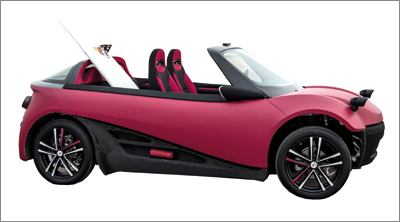|
|
||
|
The ubiquitous technology is coming up fast in the industry’s rear-view mirror, with the first cars set to hit the market next year Last year wasn’t such a hot one for cars and technology: Volkswagen was swept up in scandal for its use of emissions-test-cheating computers. (Can they be the only ones?) Yet less nefarious technological advances are also underway in the industry, and set to underwrite the next Automotive Cold War … and, you guessed, it’s 3D printing. In November, Arizona-based Local Motors unveiled the “first” 3D-printed car, the LM3D Swim. What sets it apart from other experimentations is that it’s market-ready and set to hit the roads in 2017, with pre-ordering starting this year. Local Motors hopes by then to be able to print 90 per cent of the Swim’s parts (it’s currently at 75 per cent).
Local Motors’ LM3D Swim
A 3D printer at Audi But the big players aren’t far behind: both Ford and the tarnished Volkswagen (via Audi, a brand it manufactures) are trying to big up their advances. Audi recently used metallic 3D printing to make a 1:2 replica of one of its most famous cars: the 1936 Auto Union Type C racing car, originally designed by Ferdinand Porsche. And the once industry-leading Ford is shouting about its 3D credentials: in 1988 it bought the third 3D-printing machine ever produced. Today, it uses the technology for prototypes and some parts, and recently printed its 500,000th car part: an engine cover for the all-new Ford Mustang. The opportunity that 3D printing presents to the auto industry is just as it is elsewhere: will we, in the future, be printing our cars at home (or, at the very least, spare parts)? Is the auto industry destined, like others, to deal in intellectual property versus product? In our current issue we look at the past, present and future of travel – click below to read more |
Words David Michon
Above: The famous 1936 Auto Union Type C racing car from Audi, remade as a 1:2 replica |
|
|
||




















